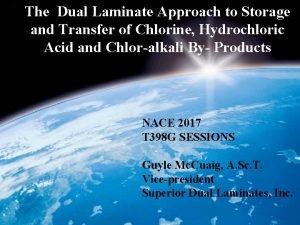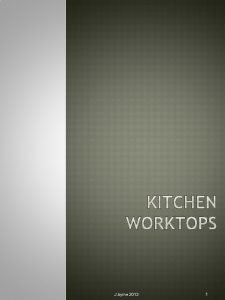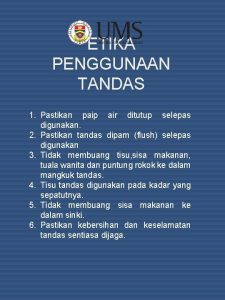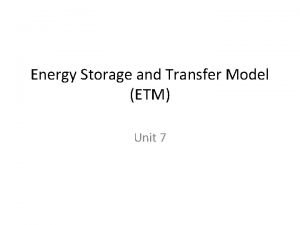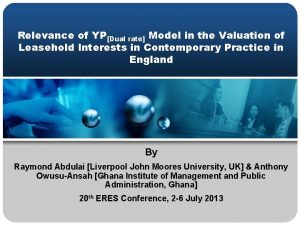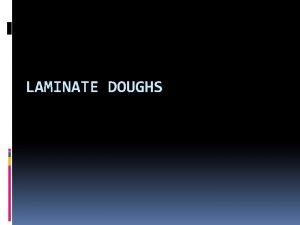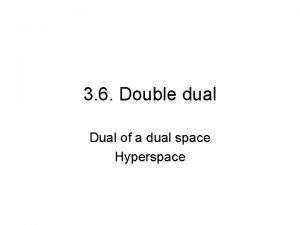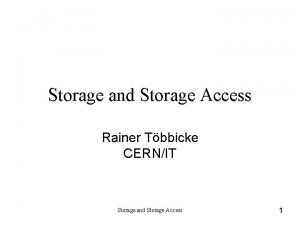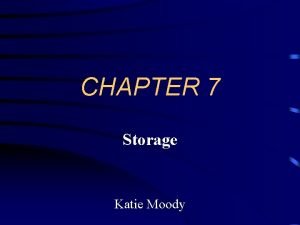The Dual Laminate Approach to Storage and Transfer















- Slides: 15

The Dual Laminate Approach to Storage and Transfer of Chlorine, Hydrochloric Acid and Chlor-alkali By- Products NACE 2017 T 398 G SESSIONS Guyle Mc. Cuaig, A. Sc. T. Vice-president Superior Dual Laminates, Inc.

Chlor-Alkali –Products Examined Chlorine Gas, Depleted Brine, Caustic, Hypochlorite and Hydrochloric acid 1. 2. 3. 4. 5. 6. 7. 8. 9. Dual Laminates Design Criteria for Critical services Existing Dual Laminate International Standards Decision Factors-Comparison with Metals and FRP Chlor-alkali Chemical and Temperature Compatibility chart Cost comparison of Vessels and Process Piping Long term performance of Dual Laminate Materials in Chlorine gas and Sulphuric acid Long term performance of Dual Laminate Materials in Hydrochloric acid services Long term Performance of Dual Laminate Materials in Hypochlorite Long term Performance of Dual Laminate Materials in 33% Membrane Caustic and Depleted Brine Piping

Design Criteria for Dual Laminate Equipment in Chlorine, HCL, Caustic and Hypochlorite Services Existing applicable international standards n Industries served and suggested materials n Suggested temperature and service ranges n Fusion and bonding methods n Proof testing methods n Chemical reduction factors n Long term creep effects n Safety concerns n Permeability effects n Future North American standards n 2

Existing Applicable international Standards for Dual Laminate Vessels and Piping 3

Dual Laminate, Metal, FRP, and Thermoplastic Tanks and Piping A Review of Decision Factors for Suitability in Chlor-alkali With many existing and new materials available to meet today’s corrosion needs there needs to be decisions made up front that will determine operating costs to provide the maximum service life for each service in Chlor-Alkali. Knowing the materials, their costs, and capabilities is essential to effective decision making. We have assembled best practice information in tabular form based on experience and past history to review Dual Laminate Piping and Vessels to effectively quantify their installed cost, life cycle factor cost, operating and maintenance cost, operational cost on purity on product yield, expected service life, health safety and environmental risks and decommissioning and disposal costs. The following materials are included in our analysis for vessels and piping: -Carbon steel, Stainless steel (316 L), Hastelloy(C 276), Fluoropolymer Lined Steel -Thermoplastics-Upvc, PP, PVDF, FEP, PFA -Dual Laminates-Upvc/frp , PP/frp, Pvdf/frp, Fep/frp, Pfa/frp -FRP thermosets-Vinylesters , Bisphenols. Epoxy Novolacs 4

5

All Materials Cost Comparison Chart for Vessels in u. s. d. /U. S. Gallons 6

All Materials Cost Comparison Chart for Process Piping in u. s. d. 7

Chlor-alkali Drying Tower Technology-60 C Chlorine Gas and 93% Sulphuric Acid Ø Membrane Chlor-alkali • Upvc/frp chlorine drying tower • In service since 1976 • Chlorine gas and 93% Sulphuric acid Ø 3 stage- Chlorine Drying Tower Ø Upvc/frp vessels c/w packed bed Ø Complete with Thermoplastic internals Ø Operating at 60 C 8

Hydrochloric Acid Manufacturing, HCL burners and HCL recycling Ø HCL Burner Scrubbers • Design and materials selection • Corrosion resistant to Chlorine based HCL technology • Packed bed or mist elimination • Long history of success • Proven track record Ø HCL Recycling technology Etfe/frp construction for Waste recycling of HCL from Hydromet process 9

HCL Storage and Transfer in Upvc/frp for 36% Hydrochloric Acid-Ambient Condition-SAGD processes for Steam Assisted Withdrawal of Shale and Heavy Oil Ø Upvc/FRP Tanks and Vessels for HCL Well Injection of 36% Ø Upvc/FRP Pipe and Fittings for transfer of Liquid HCL to Underground steam Injection sparger system Ø Upvc/frp Scrubbers and Towers for off gas clean up of HCL

Upvc/frp Storage vessels in Salt to Bleach Electrolytic Processes-Hypochlorite 16% -24% The Resin Chemistry for Hypochlorite storage was designed for the Chemical Industry and has evolved into higher percentage Bleach Manufacturing Salt to Bleach plants. With this new technology gaining popularity, the recent studies have focussed on higher concentrations which were predominantly 12% in the past. The use of Upvc/frp Dual Laminates is a good solution for most of the new parameters.

PP-B/Frp in 33% Membrane Caustic and Pvc-c/Frp in Chlorine Gas and Depleted Brine in Piping PP-B/Frp in Membrane caustic at 90 C has long been a staple for 33% Membrane caustic. Generally considered inert to caustic up to 95 C recent case studies of new technologies have found that temperature and reintroduction of high temperature Caustic Recycle or high purity brine can be challenging and reduce service life Pvc-c/frp in Chlorine Gas and Depleted brine have long been Chlorine Technology Company favorites for many years. Chemistry of processes must be strictly adhered for best Long term service life. Advantage over Epoxy Novolac is longer resistance to Chlorine gas under positive pressure and chemically better in hypochlorous acid.

Dual Laminate Vessels in Membrane Chlorine Processes and By-Products Pvc-c/Frp Process scrubber Pvdf/frp Process vessel Etfe/Frp Pressure Vessel Upvc/frp Process vessel 13

Dual Laminate Piping and Vessels Conclusion. Chlorine, Caustic and HCL Storage and Transfer Chlorine, Caustic, HCL and Hypochlorite have brought about the Non-Metallic use of Dual Laminates due to severe corrosion and Electrochemical processes not able to have any metallic parts. This approach has many advantages for long term corrosion and is a cost competitive advantage to many of todays expensive alloys if used, designed and fabricated correctly.
 Chlorine drying tower design
Chlorine drying tower design Staples binding services
Staples binding services Syngenta corn herbicides
Syngenta corn herbicides What is post formed laminate
What is post formed laminate Etika penggunaan bilik fail
Etika penggunaan bilik fail Balanced laminate composite
Balanced laminate composite Secondary storage vs primary storage
Secondary storage vs primary storage Primary storage and secondary storage
Primary storage and secondary storage Energy storage and transfer model test answer key
Energy storage and transfer model test answer key Dual core approach
Dual core approach Yp dual rate calculator
Yp dual rate calculator Secondary storage provides temporary or volatile storage
Secondary storage provides temporary or volatile storage Object based and unified storage
Object based and unified storage Difference between virtual circuit and datagram
Difference between virtual circuit and datagram Deep learning approach and surface learning approach
Deep learning approach and surface learning approach A disturbance that transfers energy is called
A disturbance that transfers energy is called
